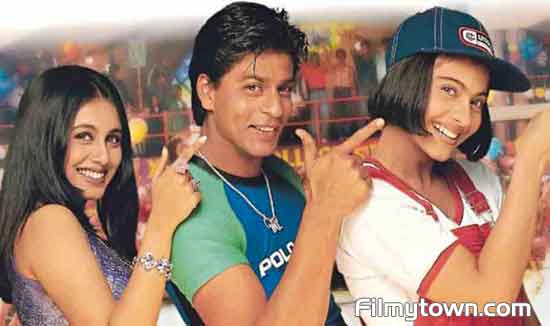After the huge success of Dilwale Dulhania Le Jayege (DDLJ) and Dil Toh Pagal Hai (DTPH) this film Kuch Kuch Hota Hai was the next big film for Shah Rukh. Written and directed by Karan Johar who was himself an assistant director and also played a bit part in ‘DDLJ’, he seems to have taken inspiration from there for this, his directorial debut after which he went on to make many a big budgeted multi-starred blockbusters.
Kuch Kuch Hota Hai was also a start of a special Actor- director relationship between Johar and Shah Rukh which has given us many a hits in the past. Kuch Kuch Hota Hai was released on 16th October 1998. Apart from India, it was filmed in many foreign locations a trend in the Bollywood movies at that time. It was also the movie which gave impetus to Rani Mukherjee’s almost defunct career, projecting her as a neo modern foreign educated girl, firmly entrenched in Indian values. This movie catered to the aspirations of the youth, who liked the college campus environment created right out of any US university right here, who also secretly visited temples to satisfy their ethnic values. It also catered to the youthful sensibilities of friendship, making the tying of friendship band on friendship day a fad, which literally did away the culture that when a girl ties a band on a boy’s wrist it is for his brotherly protection. There is no campus rage or bad boys, no villains only circumstance. It also gives a feeling that you are right in the middle of an Archie comic.
Kuch Kuch Hota Hai is a double love triangle involving the super hit pair of Shahrukh Khan (Rahul) and Kajol (Anjali) with Rani Mukherjee (Tina) in the first half and Shah Rukh, Kajol and Salman Khan (Aman) in the second. It was made by merging two stories both developed by Johar himself, the college campus puppy love triangle and the widower wanting a mother for his young daughter. Rahul has lost his wife Tina in child birth, he lives with his daughter Anjali and mother (Farida Jalal-lively) and gives one letter written by Tina to his daughter on every birthday and it is her eighth now, Tina urges her daughter to find a partner for her father in his best friend also named Anjali (Kajol) who she knew used to love him secretly though Rahul was unaware of it. So armed with the missions find lost love and new mom the girl and grandmother duo find out where the lost love is and arm twist Rahul in sending them to the camp. On some pretext they even call him there and the first meeting between the two old “friends” has been captured beautifully.
Rahul is surprised by the sea change in Anjali’s personality, who has metamorphosed from a Tomboy to a desirable woman and as the interactions between them progress in form of songs and dumb charades he realizes that he too is progressively falling in love to a person he ignored or thought of as only a friend. As the grandmother and girl duo are on the road to rejoice and celebrate in comes the twist, Anjali has been promised to Aman and are to be married soon. From here on to the climax there are many a sensitively handled scenes which culminate in a happy ending.
Kuch Kuch Hota Hai was the film of the time as with the release of Hum Aapke Hai Kaun (HAHK), DDLJ and DTPH the audiences were used to watching a super-rich dude firmly settled without any tensions in life only focusing on the love missing in it and also movies with long titles. They were getting used to the nouveau rich presentation and packaging in the movies with foreign locales thrown in to good measure, which this movie had in ample doses.
Latest fashion styles were followed with Manish Malhotra at the helm in Kuch Kuch Hota Hai, notably Shah Rukh’s dresses were really top class, Armani suits and all. It being a super-duper hit also won many a Filmfares including Best Actor, Actress, Film and Director awards apart from a few other technical ones a rare feat. It was only the third film in Indian cinema history till that time to crack the 100 crore barrier.
- Revisited by PAWAN GUPTA



